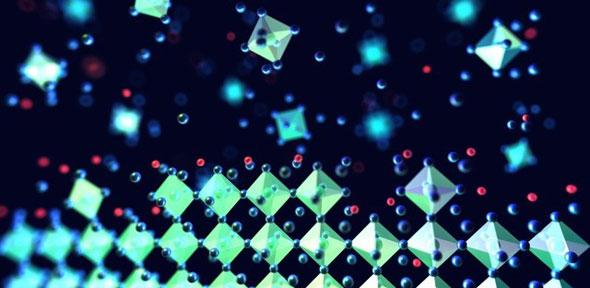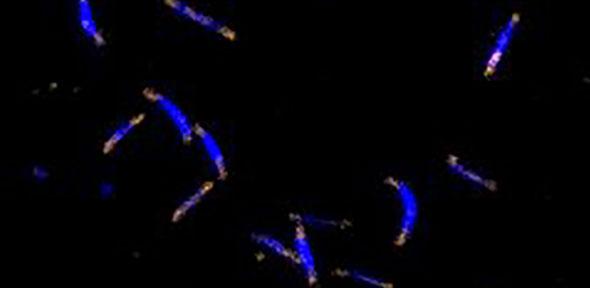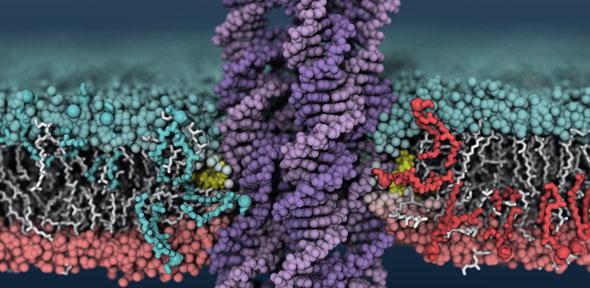
It could be a scenario from science fiction, but it really happened 130 million years ago -- in the NGC 4993 galaxy in the Hydra constellation, at a time here on Earth when dinosaurs still ruled, and flowering plants were only just evolving.
Today, dozens of UK scientists – including researchers from the University of Cambridge – and their international collaborators representing 70 observatories worldwide announced the detection of this event and the significant scientific firsts it has revealed about our Universe.
Those ripples in space finally reached Earth at 1.41pm UK time, on Thursday 17 August 2017, and were recorded by the twin detectors of the US-based Laser Interferometer Gravitational-wave Observatory (LIGO) and its European counterpart Virgo.
A few seconds later, the gamma-ray burst from the collision was recorded by two specialist space telescopes, and over following weeks, other space- and ground-based telescopes recorded the afterglow of the massive explosion. UK developed engineering and technology is at the heart of many of the instruments used for the detection and analysis.
Studying the data confirmed scientists’ initial conclusion that the event was the collision of a pair of neutron stars – the remnants of once gigantic stars, but collapsed down into approximately the size of a city. “These objects are made of matter in its most extreme, dense state, standing on the verge of total gravitational collapse,” said Michalis Agathos, from Cambridge’s Department of Applied Mathematics and Theoretical Physics. “By studying subtle effects of matter on the gravitational wave signal, such as the effects of tides that deform the neutron stars, we can infer the properties of matter in these extreme conditions.”
There are a number of “firsts” associated with this event, including the first detection of both gravitational waves and electromagnetic radiation (EM) - while existing astronomical observatories “see” EM across different frequencies (eg, optical, infra-red, gamma ray etc), gravitational waves are not EM but instead ripples in the fabric of space requiring completely different detection techniques. An analogy is that LIGO and Virgo “hear” the Universe.
The announcement also confirmed the first direct evidence that short gamma ray bursts are linked to colliding neutron stars. The shape of the gravitational waveform also provided a direct measure of the distance to the source, and it was the first confirmation and observation of the previously theoretical cataclysmic aftermaths of this kind of merger - a kilonova.
Additional research papers on the aftermath of the event have also produced a new understanding of how heavy elements such as gold and platinum are created by supernova and stellar collisions and then spread through the Universe. More such original science results are still under current analysis.
By combining gravitational-wave and electromagnetic signals together, researchers also used for the first time a new and novel technique to measure the expansion rate of the Universe.
While binary black holes produce “chirps” lasting a fraction of a second in the LIGO detector’s sensitive band, the August 17 chirp lasted approximately 100 seconds and was seen through the entire frequency range of LIGO — about the same range as common musical instruments. Scientists could identify the chirp source as objects that were much less massive than the black holes seen to date. In fact, “these long chirping signals from inspiralling neutron stars are really what many scientists expected LIGO and Virgo to see first,” said Christopher Moore, researcher at CENTRA, IST, Lisbon and member of the DAMTP/Cambridge LIGO group. “The shorter signals produced by the heavier black holes were a spectacular surprise that led to the awarding of the 2017 Nobel prize in physics.”
UK astronomers using the VISTA telescope in Chile were among the first to locate the new source. “We were really excited when we first got notification that a neutron star merger had been detected by LIGO,” said Professor Nial Tanvir from the University of Leicester, who leads a paper in Astrophysical Journal Letters today. “We immediately triggered observations on several telescopes in Chile to search for the explosion that we expected it to produce. In the end, we stayed up all night analysing the images as they came in, and it was remarkable how well the observations matched the theoretical predictions that had been made.”
“It is incredible to think that all the gold in the Earth was probably produced by merging neutron stars, similar to this event that exploded as kilonovae billions of years ago.”
“Not only is this the first time we have seen the light from the aftermath of an event that caused a gravitational wave, but we had never before caught two merging neutron stars in the act, so it will help us to figure out where some of the more exotic chemical elements on Earth come from,” said Dr Carlos Gonzalez-Fernandez of Cambridge’s Institute of Astronomy, who processed the follow-up images taken with the VISTA telescope.
“This is a spectacular discovery, and one of the first of many that we expect to come from combining together information from gravitational wave and electromagnetic observations,” said Nathan Johnson-McDaniel, researcher at DAMTP, who contributed to predictions of the amount of ejected matter using the gravitational wave measurements of the properties of the binary.
Though the LIGO detectors first picked up the gravitational wave in the United States, Virgo, in Italy, played a key role in the story. Due to its orientation with respect to the source at the time of detection, Virgo recovered a small signal; combined with the signal sizes and timing in the LIGO detectors, this allowed scientists to precisely triangulate the position in the sky. After performing a thorough vetting to make sure the signals were not an artefact of instrumentation, scientists concluded that a gravitational wave came from a relatively small patch of the southern sky.
“This event has the most precise sky localisation of all detected gravitational waves so far,” says Jo van den Brand of Nikhef (the Dutch National Institute for Subatomic Physics) and VU University Amsterdam, who is the spokesperson for the Virgo collaboration. “This record precision enabled astronomers to perform follow-up observations that led to a plethora of breath-taking results.”
Fermi was able to provide a localisation that was later confirmed and greatly refined with the coordinates provided by the combined LIGO-Virgo detection. With these coordinates, a handful of observatories around the world were able, hours later, to start searching the region of the sky where the signal was thought to originate. A new point of light, resembling a new star, was first found by optical telescopes. Ultimately, about 70 observatories on the ground and in space observed the event at their representative wavelengths. “What I am most excited about, personally, is a completely new way of measuring distances across the universe through combining the gravitational wave and electromagnetic signals. Obviously, this new cartography of the cosmos has just started with this first event, but I just wonder whether this is where we will see major surprises in the future,” said Ulrich Sperhake, Head of Cambridge’s gravitational wave group in LIGO.
In the weeks and months ahead, telescopes around the world will continue to observe the afterglow of the neutron star merger and gather further evidence about its various stages, its interaction with its surroundings, and the processes that produce the heaviest elements in the universe.
Reference:
Physical Review Letters
"GW170817: Observation of Gravitational Waves from a Binary Neutron Star Inspiral."
Science
"A Radio Counterpart to a Neutron Star Merger."
"Swift and NuSTAR observations of GW170817: detection of a blue kilonova."
"Illuminating Gravitational Waves: A Concordant Picture of Photons from a Neutron Star Merger."
Astrophysical Journal Letters
"Gravitational Waves and Gamma-rays from a Binary Neutron Star Merger: GW170817 and GRB 170817A."
"Multi-Messenger Observations of a Binary Neutron Star Merger."
Nature
"A gravitational-wave standard siren measurement of the Hubble constant."
Adapted from STFC and LIGO press releases.
In a galaxy far away, two dead stars begin a final spiral into a massive collision. The resulting explosion unleashes a huge burst of energy, sending ripples across the very fabric of space. In the nuclear cauldron of the collision, atoms are ripped apart to form entirely new elements and scattered outward across the Universe.

The text in this work is licensed under a Creative Commons Attribution 4.0 International License. For image use please see separate credits above.

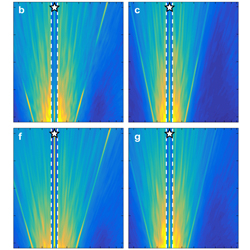
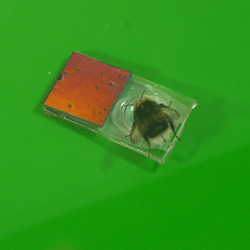
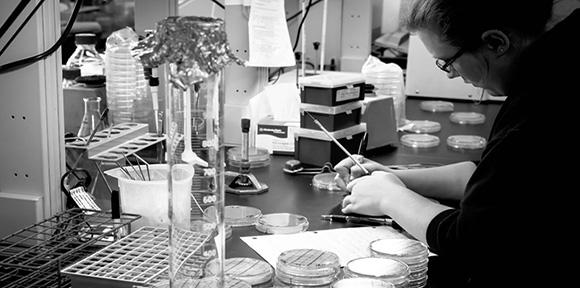
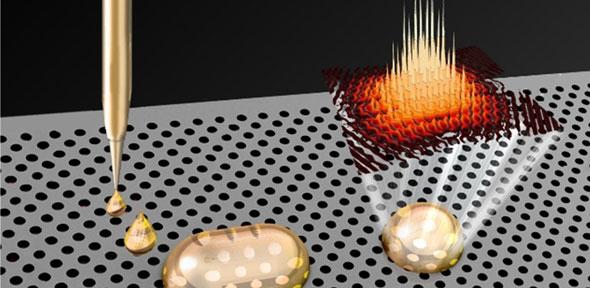






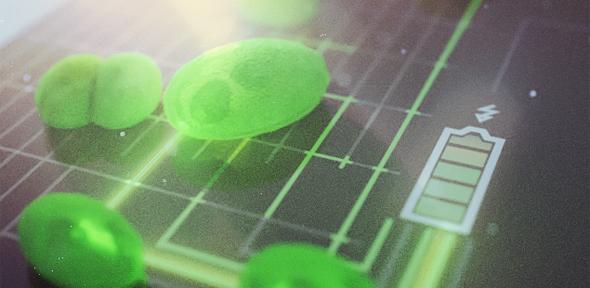

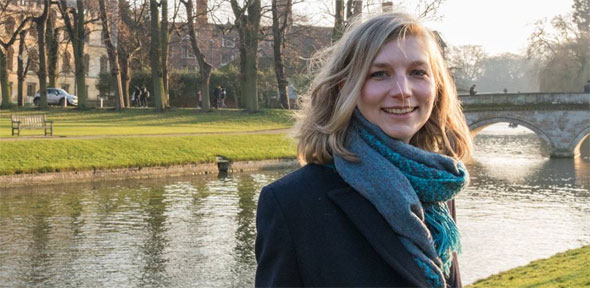 Dr Renske Smit is a postdoctoral researcher and Rubicon Fellow at the Kavli Institute of Cosmology and is supported by the Netherlands Organisation for Scientific Research. Prior to arriving in Cambridge in 2016, she was a postdoctoral researcher at Durham University and a PhD student at Leiden University in the Netherlands.
Dr Renske Smit is a postdoctoral researcher and Rubicon Fellow at the Kavli Institute of Cosmology and is supported by the Netherlands Organisation for Scientific Research. Prior to arriving in Cambridge in 2016, she was a postdoctoral researcher at Durham University and a PhD student at Leiden University in the Netherlands.